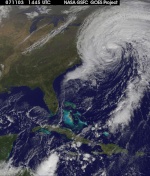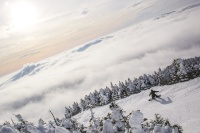A Work In Progress
5 posters
Page 1 of 1
 A Work In Progress
A Work In Progress
Hey guys and Gals. So for now this will be a work in progress. As we discuss various topics if there are specific discussions about specific aspects of the weather that we can use as a reference to brush up on a specific topic we can find it here.
Thread under construction...more to come
Thread under construction...more to come
_________________
"In weather and in life, there's no winning and losing; there's only winning and learning."
WINTER 2012/2013 TOTALS 43.65"WINTER 2017/2018 TOTALS 62.85" WINTER 2022/2023 TOTALS 4.9"
WINTER 2013/2014 TOTALS 64.85"WINTER 2018/2019 TOTALS 14.25" WINTER 2023/2024 TOTALS 13.1"
WINTER 2014/2015 TOTALS 71.20"WINTER 2019/2020 TOTALS 6.35" WINTER 2024/2025 TOTALS 0.00
WINTER 2015/2016 TOTALS 35.00"WINTER 2020/2021 TOTALS 37.75"
WINTER 2016/2017 TOTALS 42.25"WINTER 2021/2022 TOTALS 31.65"

sroc4- Admin

- Posts : 8457
Reputation : 302
Join date : 2013-01-07
Location : Wading River, LI
 Re: A Work In Progress
Re: A Work In Progress
This weather education thread is my new favorite.
This is great especially during the non snow months coming up, which I'm hoping will begin in May this year.
This is great especially during the non snow months coming up, which I'm hoping will begin in May this year.

CPcantmeasuresnow- Wx Statistician Guru

- Posts : 7281
Reputation : 230
Join date : 2013-01-07
Age : 103
Location : Eastern Orange County, NY
 Re: A Work In Progress
Re: A Work In Progress
CPcantmeasuresnow wrote:This weather education thread is my new favorite.
This is great especially during the non snow months coming up, which I'm hoping will begin in May this year.
I hope to have some great discussions on tropical systems this year.
_________________
"In weather and in life, there's no winning and losing; there's only winning and learning."
WINTER 2012/2013 TOTALS 43.65"WINTER 2017/2018 TOTALS 62.85" WINTER 2022/2023 TOTALS 4.9"
WINTER 2013/2014 TOTALS 64.85"WINTER 2018/2019 TOTALS 14.25" WINTER 2023/2024 TOTALS 13.1"
WINTER 2014/2015 TOTALS 71.20"WINTER 2019/2020 TOTALS 6.35" WINTER 2024/2025 TOTALS 0.00
WINTER 2015/2016 TOTALS 35.00"WINTER 2020/2021 TOTALS 37.75"
WINTER 2016/2017 TOTALS 42.25"WINTER 2021/2022 TOTALS 31.65"

sroc4- Admin

- Posts : 8457
Reputation : 302
Join date : 2013-01-07
Location : Wading River, LI
 Re: A Work In Progress
Re: A Work In Progress
Miss you bud!

Noreaster- Posts : 463
Reputation : 5
Join date : 2013-01-08
Age : 41
Location : Merrick, NY
 Re: A Work In Progress
Re: A Work In Progress
Would this be the place to ask a question about lake effect snow?

HeresL- Posts : 122
Reputation : 0
Join date : 2013-01-20
Location : West Milford, NJ
 Re: A Work In Progress
Re: A Work In Progress
I'll ask here, but feel free to delete if it doesn't belong: I know that snow to liquid ratios average about 10:1, but that they get higher at temps get lower. How do the different heights affect the ratios? In other words, do you start at 500mb or 750 or 850?
Guest- Guest
 Re: A Work In Progress
Re: A Work In Progress
HeresL wrote:Would this be the place to ask a question about lake effect snow?
I happened to stumble in here and saw your unanswered question. I'm sorry that it's taking so long to get a response, and I hope that you're still a member. What's your question?
rb924119- Meteorologist

- Posts : 7087
Reputation : 195
Join date : 2013-02-06
Age : 32
Location : Greentown, Pa
 Re: A Work In Progress
Re: A Work In Progress
Guest wrote:I'll ask here, but feel free to delete if it doesn't belong: I know that snow to liquid ratios average about 10:1, but that they get higher at temps get lower. How do the different heights affect the ratios? In other words, do you start at 500mb or 750 or 850?
Another one, I hope that you are still a member here, and apologize for the massively delayed response. This is a FANTASTIC question!! To keep it simple, it really depends on where the snowflakes are forming. For example, let's say that you have a column of air with the following thermal profile (from top to bottom):
300mb: -60ºC
400mb: -40ºC
500mb: -25ºC
600mb: -18ºC
700mb: -10ºC
850mb: -5ºC
925mb: -3ºC
Surface: -3ºC
Now, let's assume that we have a winter storm approaching and this thermal profile remains constant (in reality, this wouldn't happen, but to keep it simple we will assume that it will). The precipitation (snow) at the beginning will be generated by the forcing mechanisms (thermal/warm air advection) at the lower levels, say, from 925mb up through about 850mb. Generally, this will be your initial virga (precipitation aloft that doesn't reach the ground because it sublimates (snow evaporating into drier air). This works to saturate the column below until it becomes moist enough to reach the surface. The snow-liquid ratio of this snow will be based on the average thermal profile between 925mb and 850mb, since that's where the snow is forming.
Now, as the storm approaches and the more significant forcing mechanisms begin to move overhead (things like maximum thermal/warm air advection, positive vorticity advection, and jet dynamics), now you shift the levels at which the snow is being formed at higher, because those forcing mechanisms occur further aloft. For example, your thermal/warm air advection will now be occurring from 925mb through 700mb, but will be maximized between 850mb and 700mb, vorticity advection will occur at 500mb, and your jet dynamics will occur at 300mb. Therefore, now you have much more substantial forcing for ascent through the entire atmospheric column, but biased to the higher 2/3 of the column. Therefore, the snowfall ratio will change based on the average thermal profile from say 850mb (the start of maximum thermal/warm air advection) all the way to 300mb. As you can see, the heart of this storm would feature a much higher ratio snowfall than the beginning. And that is a pretty classic evolution during your mid-winter events. As the storm departs, the ratios will change again, but this gets a bit more complicated because the way that change is highly dependent on the storm's structure. In some cases, the ratios will increase further as the storm departs, in others, it won't really change at all, and yet in others it will decrease again. Here's a graphic showing the relationship between snow-liquid ratio and temperature (one of my "secret weapons" of forecasting snowfall lol):

With the above said, there are caveats to this; mainly, high-ratio snows do not always mean increased snowfall totals. Why? Well, the average thermal profile of the part of the atmosphere where the snowflakes are forming determines the crystal habits of the snowflakes. Basically, the structure and shape of the snowflakes change as the temperature changes. As a quick example, take a look at the following graphic (admittedly, another one of my "secret weapons" of snowfall forecasting lol):

As you can see, there are several different snowflake types depending on the thermal profile of the atmosphere in which they form. The "holy grail" of snowfall are the dendrites and plates, as those are the ones that really stack up the fastest and most efficiently, mainly dendrites, because they are much bigger, and as they accumulate, they don't fit together very well, so there's a lot of airspace between each one. Other snowflake types, like needles and columns are the kiss of death for snowfall accumulation, because they are much smaller and they can really pack together pretty tightly. So, as discussed above, as the thermal profile changes during the evolution of the storm, so too do the types of snowflakes and the relative accumulation efficiency. That's why higher ratios don't always necessarily mean higher accumulations at the surface
I hope this helps, but if not, let me know and I'll be glad to try and explain further!
rb924119- Meteorologist

- Posts : 7087
Reputation : 195
Join date : 2013-02-06
Age : 32
Location : Greentown, Pa
Sparky Sparticles likes this post
Page 1 of 1
Permissions in this forum:
You cannot reply to topics in this forum
 Home
Home